#Karl Marx Allee II
Explore tagged Tumblr posts
Text
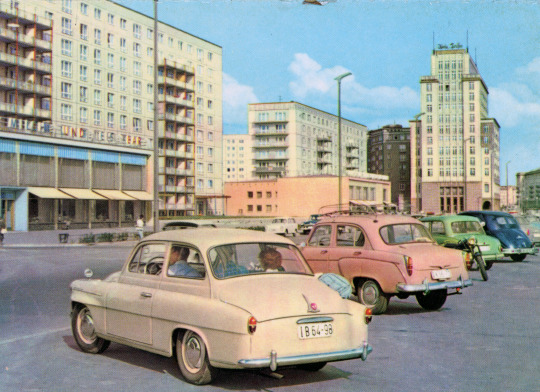
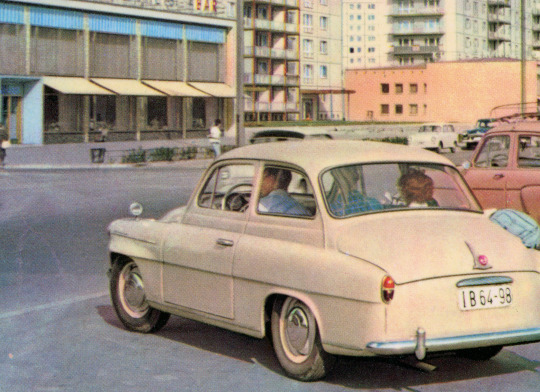
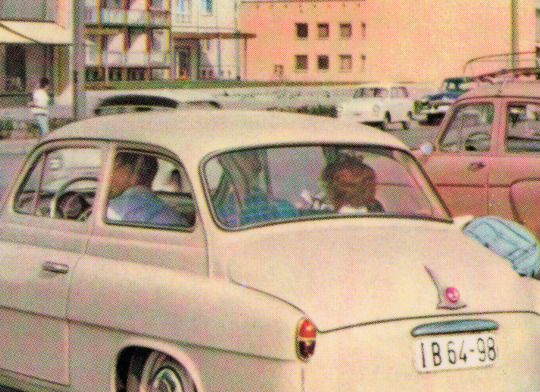
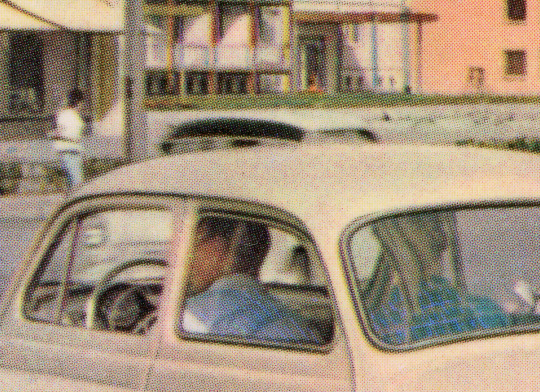
Ansichtskarte / Souvenirkarte
KarlMarxAllee Zentrum Berlins – der Hauptstadt der Deutschen Demokratischen Republik. Карл-Маркс-Аллее Центр Берлина - столицы Германской Демократической Республики. Karl Marx Avenue The centre of Berlin - capital of the German Democratic Republic. Karl-Marx-Allee Le centre de Berlin - capitale de la République Démocratique Allemande. Avenida Karl Marx Centro de Berlin, capital de la República Democrática Alemana.
Berlin: Liga für Völkerfreundschaft der DDR (o.A.).
o.J.
#Liga für Völkerfreundschaft der DDR#Berlin#Berlin Mitte#Karl Marx Allee#Karl Marx Allee II#Philokartie#DDRPhilokartie#OstmodernePhilokartie#akBerlinMitte#akKarlMarxAllee#BerlinMitte#Ostmoderne#DDRModerne#SocialistModernism#DDRArchitektur#GDRArchitecture#HausBerlin#SocialistArchitecture#StädtebauDerDDR#MokkaMilchEisbar#Ansichtskartenfotografie#AnsichtskartenfotografieDerDDR#deltiology#VintagePostcard#OstmoderneFarbphilokartie
49 notes
·
View notes
Text
Jenny Shane
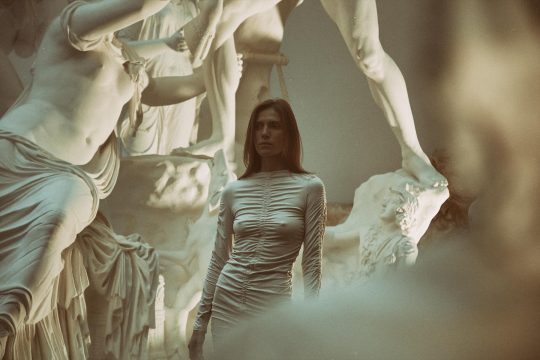
Jenny Shane is a Software engineer from Tel Aviv. She visited Berlin for the first time in December 2023. Jenny asked for a photo session. I was in Berlin and able to take photos of her, At this time of the year, it is difficult to take photos outside. For this Photo Session, we decided to shoot in a sculpture museum in Berlin, next to Charlottenburg Palace (Schloss Charlottenburg). 1 hour of photo shooting with 2 different outfits in this beautiful location.
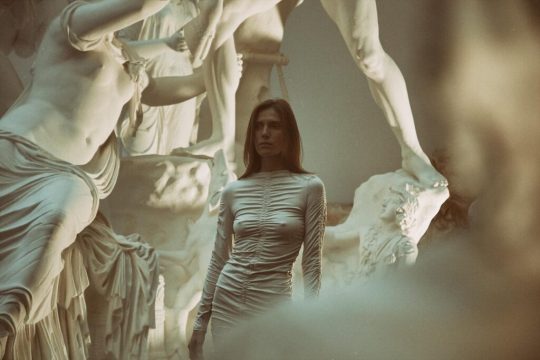
Jenny Shane in a sculpture museum in Berlin Photo shooting time We decided to meet at 13:30 in front of the museum, but when I was leaving home I checked on Google map and recognized the museum would open at 14:00. But that was a good time to sit down in the café next to the museum and get to know each other. Jenny Shane asked me about my story and how I am lucky that I could make my life with what I Love. Sometimes I forget But I know that I am a Lucky person, I started to make money from Photography when I was a 13-year-old teenager, and now I live in Europe. Photo Shooting Camera and Lens For this Photoshoot, I used my Canon 6D camera with a Canon EF 24-105mm f/4L IS II Lens. I had my analog Camera with me, but I forgot to take my tripod for long exposure, I decided to not waste my film, because I had to use a low shutter speed and most of the photos might be blurry. I did most of the photos with my speed light, But sometimes I used available lights from the museum. Furthermore, I like this Dramatic light and the white outfit gives the best vibe to this photo.
Photo Shooting Locations in Berlin-Germany
Berlin has many alternatives and amazing locations, which I offered to Jenny Shane: - Brandenburger Tor - Garten Der Welt- Oriental Islamic garden - Berlin Wall - Reichstag Building - Checkpoint Charlie - Gendarmenmarkt - Museumsinsel - Potsdamer Platz - Marie-Elisabeth-Lüders-Haus - Mauerpark - Tempodrom Berlin - Tempelhof Airport (Flughafen Tempelhof) - Teufelsberg - BTB thermal power station Adlershof - Botanical Garden and Botanical Museum (Botanischer Garten und Botanisches Museum) - Bode Museum - Alte Nationalgalerie - Berlin Holocaust Memorial - Bahnhof Friedrichstraße - Olympiastadion - Karl-Marx-Allee - RAW-Friedrichshain - Volkspark Friedrichshain - Oberbaum Bridge - Berliner Dom - Regierungsviertel - Müggelsee Read the full article
0 notes
Photo

Endless summer nights
0 notes
Text
LUBLIN visit BERLIN
→ in BERLIN―KMA II
First study visit of experts from MOM - Museum of Housing Estates Lublin - in Berlin in July 2018.
Field research at Karl-Marx-Allee and an interview session with team of Werkstatt Haus der Statistik on grass-root urban development movements in Berlin.



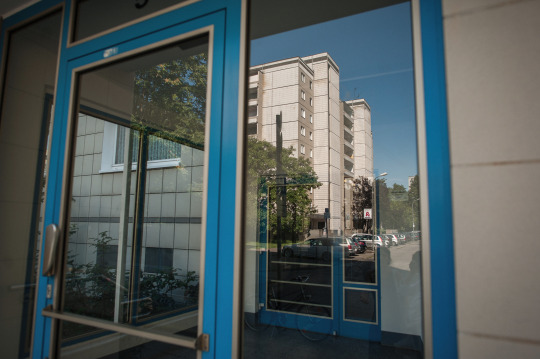

All photos Study visit of MOM team in Berlin, July 2018
Credits QZ Photo, Marcin Pietrusza
0 notes
Note
Hi, I'm travelling to Berlin soon for 4 days and was wondering if you had any ideas for interesting locations to visit and explore. I've seen the main tourist attractions and am looking for lesser known locations. Thanks!
Dear Anon, I see your problem but I don´t know exactly what you saw in Berlin, so I´ll give you a list of some fancy places and tours I would do myself:
BIKE TOURS: In sunny days you could rent a bike to go around the city. I had a good experience with “Lila Bike” in the Schönhauser Allee and a very bad one with a Bike stand near the Brandenburger Tor. In the center, you pay 12 Euros per Day and by Lila 8-10 so I definitely recommend it. Nice bike tours are to Wannsee, the big lake in South West Berlin (you can just take a look at the recommended stages and trust google maps if you don´t want to book a tour.) or the tour to Potsdam.
CHILLING IN THE PARK: Berlin has beautiful parks. The biggest is the Tiergarten and you might have already been there. Very nice but quite touristic is the Teahouse at English Garden, so I rather go to the Cafe am Neuen See (I don´t know if you can German but you can see the nice pics). You can bring a blanket and some food and picnic. In the Wes it can be a bit crowded so better during the week. If you haven´t done it already, you can visit the Zoo, where you can feed the Gorillas and Monkeys or see hippos or penguins shows ( here you can see the times). Other nice parks are the Volkspark in Friedrichshain, where you visit the Märchenbrunnen, a big fountain representing Brothers Grimm´s Fairy Tales, and Görlitzer Park in Kreuzberg. Görli is also the right place if you fancy playing ball or smoke weed.
BEACHES: If you go to Warschauer St. along the river, you find some little beaches and Coffee Shops where you can sunbathe. Just start from the Oberbaumbrücke and follow the river or take a look at the beautiful Graffiti of the East Side Gallery, the biggest intact rests of the Berlin Wall.
CULTURE: Have you already been to the Jüdisches Museum / Jewish Museum? It´s a sublime experience and gift of the architect Daniel Liebeskind (the one who build Ground Zero in NY). It´s not just a Jewish collection telling the story of the holocaust, and if you haven´t seen it yet you´re missing something huge. A nice place to get to know a piece of berlin history is the Brechthaus / Brecht House. Here you get a guided tour and you can also take a little excursion to the Cemetery in the Dorotheestraße. and visit Brecht and his wife Helene Weigel, and the philosophers Hegel, Fichte and Herbert Marcuse.If you like contemporary art you might like the Hamburger Bahnhof and see some Warhol, Roy Lichtenstein, Joseph Beuys… I suppose you already saw the museums in the Museums Island but if not you can´t miss the Nefertiti´s Head and the beautiful Egyptian collection at Neues Museum and the monumental Ishtar Door and Pergamon Altar at Pergamon Museum.
FANCY PLACES AND TOURS: At Berliner Unterwelten e.V. you can visit the underground Berlin, the old II WW bunkers and subway stations, including Hitler´s bunker. Or if you want to take a look at some old soviet architecture from the DDR time (German Democratic Republic) walk along the Karl Marx Allee and have a cozy coffee (or brunch) pause at Cafe Sybille. Here you´ll find a little photo exhibition on the story of East Berlin monumental Street.
FOR A SUNDAY BRUNCH: Cafe Morgenrot (Prenzlauer Berg), Cafe Morgenland (Kreuzberg), Que Pasa (Kreuzberg).
FOR A DANCING EVENING: Clärchen Ballhaus (Mitte), Cassiopeia (Kreuzberg).
FOR A FANCY COFFEE + BOOK EXPERIENCE: Shakespeare&sons - ENG Bookshop (Friedrichshain), Literaturhaus in der Fasanenst. - GERMAN Bookshop (but lovely Garden!) (Charlottenburg/ Wilmensdorf), St George´s Bookshop - ENG -( Prenzlauer Berg). These are my inside tips for now. I´m not a Berlinerin but I´m still working on it. Hope it helped :)
#Berlin#tourist in your city#berlin tour#bike tour#my places in berlin#anon#anon ask#berlin holidays#my addresses in berlin
21 notes
·
View notes
Text
36 Hours in Berlin – The New York Times
On Nov. 9, 1989, the East German government made a surprising announcement: It was easing up travel restrictions on its citizens. East Berliners flocked to the nearest border crossings at the Berlin Wall, especially at Checkpoint Charlie, the famed crossing between the divided Berlins. Not long after that, Berliners from the east and west began chipping away at the literal and metaphorical wall that had separated them for nearly three decades, since the Soviet-backed East German government erected the concrete slabs that split the city in two. The Cold War was over. Well, sort of. Today in Berlin you can still go back to that world by eating and drinking in restaurants and bars dedicated to the German Democratic Republic — G.D.R. for short, or D.D.R. in the local parlance — as well as learn about the former East Berlin via fascinating museums, architecture and shops.
Friday
1) 3 p.m. Communists, nudists and dissidents
Ever wonder why East Germans had a proclivity for hanging out in public stark naked? Or what it was like to drive a Trabant — the cult East German-made automobile with a Formica-like Duroplast body — around East Germany in the 1980s? Or what an interrogation room looked like? You can find out at the DDR Museum, a fascinating, immersive, hands-on experience that serves as an excellent introduction to life in East Germany. The museum, which opened in 2006 and is housed in a modern building on the Spree River, recently welcomed its six millionth visitor. Admission: 9.80 euros, or about $10.80.
2) 7 p.m. The ‘People’s’ restaurant
Named for the “People’s Chamber,” the lower house of parliament in the G.D.R., Volkskammer tries to revive East Germany on a daily basis by cooking up gruel for the odd local with a case of “ostalgie” — nostalgia for the old East — and curious tourists willing to punish their palates with hearty slop like Falscher Hase, or counterfeit rabbit: a dense, gravy-smothered meatloaf hiding a hard-boiled egg and cured pork knuckle with kraut. Dinner for two is about €50, including beer or wine. If you can’t stomach Soviet-era cuisine, try nearby Michelberger (in the hotel of the same name), which serves up excellent farm-to-table, uber-seasonal fare such as venison pie or wild boar schnitzel with pumpkin. Dinner for two is about €75, with wine.
3) 9 p.m. Red hangover
Opened in 1992, just three years after the Wall fell, Die Tagung, a bar in the Friedrichshain neighborhood, celebrates the G.D.R. with a sense of humor. The owner, a longtime Friedrichshain resident, scoured a local abandoned train repair complex for former East Berlin-era signs that now grace the walls, along with tapestries bearing the image of Karl Marx, and a large bust of Vladimir Lenin who was, on a recent visit, sporting headphones and aviator glasses. There are also enough red stars and hammer-and-sickle symbols to inspire a collective May Day parade. Imbibe a Russian Cocaine, €3: a shot of vodka that comes with a slice of lemon coated with sugar on one side and coffee grinds on the other.
Saturday
4) 10:30 a.m. A Stalinist stroll
Built on the rubble of World War II, the wide boulevard known as Karl Marx Allee started life as Stalinallee, Stalin Boulevard, but was renamed after Marx in 1961. Between Frankfurter Tor in Friedrichshain and Alexanderplatz — just under two miles — the 300-foot-wide street is lined with monumental, wedding cakelike, Stalinist-style structures, built to be “workers’ palaces,” a place for East Germany to showcase the glories of Socialism. The Italian architect Aldo Rossi called it “Europe’s last great street.” Placards are positioned along the way to explain the history of noteworthy buildings, such as Kino International, a still-working movie theater and a gem of functionalist architecture, and the duel towers, Frankfurter Tor.
5) Noon. Snack break
Named for a popular G.D.R.-era magazine, Café Sibylle is one of the few businesses on the Karl Marx Allee that still exists from the Cold War days. About halfway along the boulevard, the cafe is nicely positioned for a rest. After taking in the permanent exhibition on the evolution of the boulevard, complete with text, photos and household objects from the 1950s and 60s, plant yourself at a table and sip coffee or a beer and graze on a salad or a sausage. The wooden tables and high ceilings invite visitors to stay awhile. Lunch for two costs about €25.
6) 3 p.m. Shop like a Socialist
Good news, comrade! Both ends of Karl Marx Allee — or at least between Frankfurter Tor and Alexanderplatz — are book ended by Humana Second Hand & Vintage shops. The outlet at Frankfurter Tor is the largest secondhand shop in Berlin: four floors of vintage and used duds. The top floor focuses on clothes from the 1950s to the 1990s, and there are often select racks for G.D.R. clothes at either or both locations. If you like your Socialist souvenirs even more kitschy, head to Ampelmann, south of Alexanderplatz, a shop that sells images of the “traffic light man,” an East German symbol that has become iconic since the fall of the Wall, on everything from golf balls to coffee mugs to T-shirts.
7) 5:30 p.m. Walking the Wall
The East Side Gallery in Friedrichshain; the long stretch of the Berlin Wall that is clad in colorful iconic images; and the Wall Museum near Checkpoint Charlie: These sites all get ample visitors. But the most sobering way to get a sense of what it was like to live in Berlin during the time of the Wall is at the Berlin Wall Memorial in Prenzlauer Berg. This portion of the wall and the harrowing section known as the “death strip” — with its booby traps, armed guards, towers and trenches — allow visitors to see the most preserved swath of the remaining wall complex. Admission is free.
8) 8 p.m. Vodka shots and soljanka
Opened in 1994 and located in the former East Berlin neighborhood of Prenzlauer Berg, Restaurant Pasternak serves dishes from around the former Soviet Union, particularly from Russia and Ukraine; many of the options have an Eastern European Jewish bent. The restaurant is named after the Nobel Prize-winning Russian poet and author of “Doctor Zhivago,” Boris Pasternak. Start off with a bowl of soljanka, a creamy, dill-spiked soup that has Russian origins, but was one of the most popular dishes in the former East Germany; then move on to sautéed calf’s liver and latkes accented with a spicy apple jam. And don’t forget to have a few shots of the house vodka. Dinner for two, about €85 with wine or vodka.
9) 10 p.m. House party
You could go to the Museumswohnung, a three-bedroom apartment so perfectly preserved you’d almost expect the Stasi, the official East German state security apparatus, to be bugging the place. Or you could spend your Saturday night dancing at Salon zur Wilden Renate, a techno club that took over an abandoned apartment building in Friedrichshain and sort of left things as they were, including 1970s wallpaper, couches and beds. Opening times vary, so check the club website before heading out. Entrance is €10 to €15, depending on the night and event.
Sunday
10) 11 a.m. The lives of others
The Stasi’s main job was spying on ordinary people who were not in line with party policies and values, hauntingly depicted in the 2006 German film “The Lives of Others.” The Stasi Museum is in the agency’s former headquarters in Lichtenberg. The three floors hold hundreds of artifacts, such as bugging devices, hidden cameras and lock picks, as well as placards detailing nearly every aspect of the organization, including the fact that up to 180,000 East German “unofficial informants” were working with the Stasi by 1989. The tour ends on the third floor at a cafe and bar — after the museum, you might need a stiff drink. There are free 90-minute guided tours in English at 3 p.m. on Thursday to Monday. Admission is €8 and the tour is free.
11) 2 p.m. Schnitzel and schlock
PILA is a restaurant on Friedrichshain Volkspark that also bills itself as a museum dedicated to the former East Germany. The interior is bedecked with all manner of G.D.R. minutiae — enough East Berlin flags and portraits of former dear leaders to bring tears to the eyes of those nostalgic for five-year plans and collective farming. This is a place for those craving dishes like schnitzel atop fusilli pasta with a few splotches of ketchup-spiked tomato sauce and plus-size plates of currywurst, which is better than you’d think. Even the light, flimsy forks and spoons are legit G.D.R. throwbacks. Lunch is about €40 with beer.
Lodging
A Stadtbad, or public bathhouse starting in 1902, this ornate building in pretty Prenzlauer Berg became a hotel in 2016. Hotel Stadtbad Oderberger (Oderberger Strasse 57; +49 (30) 780 089 760; www.hotel-oderberger.berlin; doubles from 117 euros per night) has 70 rooms, five suites and two apartments. Rooms have oak floors, TVs and coffee makers. The bathrooms have rain-shower heads. The handsome in-house restaurant, housed in a former thermal power station, cooks up German dishes with modern flair and offers a fair number of vegan and vegetarian options. And don’t forget your swimming suit. The original pool is now the hotel pool.
Ostel (Wriezener Karree 5; +49 (30) 2576 8660; www.ostel.eu; doubles from 42 euros per night) is an East Berlin-themed hotel near the Ostbahnhof, or East Railway Station, in Friedrichshain. The 36 single and double rooms are, as one would expect, dripping in Communist-era kitsch, complete with groovy, colorful wallpaper and bedspreads. All rooms have G.D.R.-era radios. But be careful! It would be easy to think that the Stasi is secretly listening to you. Some rooms have shared bathrooms.
If you want to go the private apartment rental route, base yourself in pretty Prenzlauer Berg where studios and one-bedroom apartments may cost around €75 per night.
Sahred From Source link Travel
from WordPress http://bit.ly/2NsySIU via IFTTT
0 notes
Photo
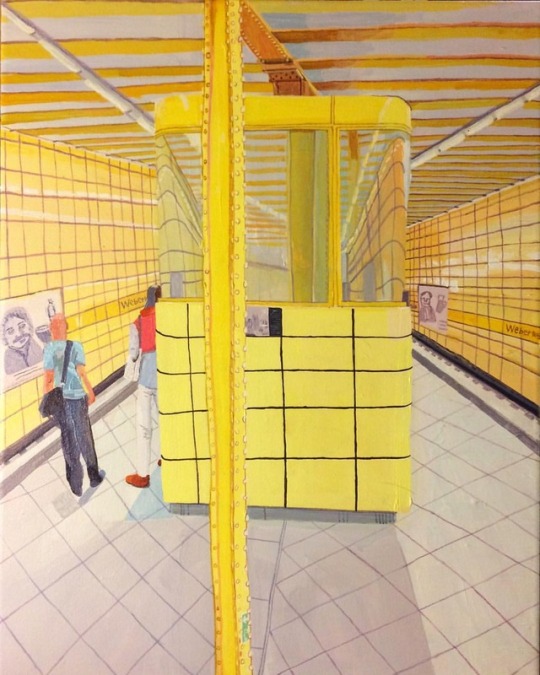
'Weberwiese U-Bahn Station' acrylic on canvas "The station was opened in 1930 as Memeler Straße station, named after a nearby street, itself named after the town of Memel (today Klaipėda). Its architect was Alfred Grenander, who also designed the other stations of former line E, from Alexanderplatz to Friedrichsfelde, around the same time. Weberwiese is an underground station. Each end has two exits, all opening to Karl-Marx-Allee. The platform itself includes a simple central row of supporting columns. Aside from some variation in the length of the exits, the station is nearly symmetrical, with a form similar to the other stations. During World War II, on 26 February 1945, the station was seriously damaged in a bombing raid and 200 people, mostly women and children, were killed. In 1950, following the founding of the German Democratic Republic the station was renamed Marchlewskistraße, after a nearby street named after politician Julian Balthasar Marchlewski, co-founder of the Polish Social Democratic Party. In 1992, after the reunification of Germany, the Berlin Senate decided in 1992 to rename the station again with the current name Weberwiese (weaver's meadow), after a small park near the station. In the mid-1990s, the tiles gradually began to fall from the walls, and the original name Memeler Straße became visible again. With the renovation, these last traces of the past were removed." (at Berlin, Germany)
0 notes
Photo

Ansichtskarte
Berlin - Karl-Marx-Allee [Stalinallee]
VEB BILD UND HEIMAT Reichenbach i.V.
Foto: Hoffmann, Oelsnitz (Erzgeb.)
1960
Annotation zur Karte aus der FG Ostmodern
#Philokartie zum Sonntag: Ein Gruß aus der Karl-Marx-Allee. “Liebe Grete, herzlichste Sonntagsgrüße sendet Dir Gustel. … Brief folgt morgen.” Viel mehr an Nachricht transportiert diese Karte vom 25. August 1963 von Ostberlin nach Westberlin, dort nach Neukölln, Treptower Straße, II. Etage, nicht. Jedenfalls auf den ersten Blick. Natürlich bildseitig schon in Gestalt der Größe des sozialistischen Städtebaus der frühen Jahre, denn noch war der westliche Bauabschnitt der Karl-Marx-Allee, in dem Josef Kaiser die Ostmoderne zum erblühen brachte, offenbar zu sehr Baustelle, um Postkartenmotiv zu werden. So spazieren die Menschen auf dem Bild dieser Ausgabe in der Karl-Marx-Allee, zum Aufnahmezeitpunkt noch Stalinallee, vor dem Block E von Hanns Hopp, der im Vergleich zu Richard Paulicks Inszenierung im Block C fast dezent ausfiel. Aber Hanns Hopp erhielt mit dem Block G noch Gelegenheit, mit deutlicher gelösterer Handbremse zu bauen. Verspielter als dort wurde die Nationale Tradition nie interpretiert und doch blieb sie auch da immer im Schatten der Türme von Hermann Henselmann für das Frankfurter Tor, deren nördlichen man sieht. Unter den Alpha-Architekten der DDR war Henselmann seit je der durchsetzungsstärkste.
Die Karte des VEB BILD UND HEIMAT ist laut Druckvermerk auf das Jahr 1960 datiert, was mit dem Gezeigten harmoniert, nicht jedoch mit der Beschreibung: Berlin - Karl-Marx-Allee. Denn 1960 stand Nikolai Tomskis Stalindenkmal noch und zwar in der nach ihm benannten Allee. Erst der Herbst 1961 führte die Allee zu Karl Marx und das Denkmal in die Schmelze. Eine Erklärung lässt sich aber leicht finden: Wo bei Ansichtskarten aus der zeitgleich umbenannten Stalinstadt ein grober Stempel vom neuen Namen kündete, verschwand die ursprüngliche Bezeichnung hier hinter einem vergleichsweise geschickten Überdruck und dieser im vorliegenden Fall konkret zudem noch unter einem roten Aufkleber “Eilsendung Exprès”.Das jedoch führt gleich zu nächsten, deutlich schwieriger aufzuklärenden Irritation. Warum verwendete jemand das vergleichsweise exorbinate Express-Porto von 60 Pfennigen, um einen Sonntagsgruß von Stadthälfte zu Stadthälfte zu senden, zumal vermutlich erfolglos, denn der Poststempel sagt 26.08. als Abgangs- und eine handschriftlich angebrachte Kennzeichnung 1./9. als mutmaßliches Zugangsdatum? Dazu fällt auf, dass die beiden Briefmarken aus der personenkultigen Dauermarkenserie “Staatsratsvorsitzender Walter Ulbricht” so versetzt (die lila Marke auf der Seite, die rote kopfstehend) aufgeklebt wurden, dass sie laut der heute leider nur noch wenig gebrauchten Briefmarkensprache - Motto “Was ich nicht wage Dir zu schreiben / Sollen Dir die Marken zeigen” - die Botschaft mitsandte: Vergiss mich nie, ich liebe Dich. Dies passt denn auch zur gesamten Botschaft: “Liebe Grete, herzlichste Sonntagsgrüße sendet Dir Gustel. Deine beiden Bilder habe ich gestern erhalten, sind gut getroffen. Brief folgt morgen.” Es könnte also sein, dass dieser unscheinbare Sonntagsgruß, dieser Blick auf das gelassen-gediegene Flanieren in der Stalinallee zugleich Zeugnis einer tieftraurigen, durch zwei Bilder erneut tief angerührten Sehnsucht ist, denn 1963 lag Neukölln zwar wie auch heute nur wenige Ringbahnstationen vom Friedrichshain entfernt aber doch unerreichbar in einer anderen Welt.
(Ben Kaden, Berlin, 28.07.2019)
5 notes
·
View notes
Text
36 Hours in Berlin – The New York Times
On Nov. 9, 1989, the East German government made a surprising announcement: It was easing up travel restrictions on its citizens. East Berliners flocked to the nearest border crossings at the Berlin Wall, especially at Checkpoint Charlie, the famed crossing between the divided Berlins. Not long after that, Berliners from the east and west began chipping away at the literal and metaphorical wall that had separated them for nearly three decades, since the Soviet-backed East German government erected the concrete slabs that split the city in two. The Cold War was over. Well, sort of. Today in Berlin you can still go back to that world by eating and drinking in restaurants and bars dedicated to the German Democratic Republic — G.D.R. for short, or D.D.R. in the local parlance — as well as learn about the former East Berlin via fascinating museums, architecture and shops.
Friday
1) 3 p.m. Communists, nudists and dissidents
Ever wonder why East Germans had a proclivity for hanging out in public stark naked? Or what it was like to drive a Trabant — the cult East German-made automobile with a Formica-like Duroplast body — around East Germany in the 1980s? Or what an interrogation room looked like? You can find out at the DDR Museum, a fascinating, immersive, hands-on experience that serves as an excellent introduction to life in East Germany. The museum, which opened in 2006 and is housed in a modern building on the Spree River, recently welcomed its six millionth visitor. Admission: 9.80 euros, or about $10.80.
2) 7 p.m. The ‘People’s’ restaurant
Named for the “People’s Chamber,” the lower house of parliament in the G.D.R., Volkskammer tries to revive East Germany on a daily basis by cooking up gruel for the odd local with a case of “ostalgie” — nostalgia for the old East — and curious tourists willing to punish their palates with hearty slop like Falscher Hase, or counterfeit rabbit: a dense, gravy-smothered meatloaf hiding a hard-boiled egg and cured pork knuckle with kraut. Dinner for two is about €50, including beer or wine. If you can’t stomach Soviet-era cuisine, try nearby Michelberger (in the hotel of the same name), which serves up excellent farm-to-table, uber-seasonal fare such as venison pie or wild boar schnitzel with pumpkin. Dinner for two is about €75, with wine.
3) 9 p.m. Red hangover
Opened in 1992, just three years after the Wall fell, Die Tagung, a bar in the Friedrichshain neighborhood, celebrates the G.D.R. with a sense of humor. The owner, a longtime Friedrichshain resident, scoured a local abandoned train repair complex for former East Berlin-era signs that now grace the walls, along with tapestries bearing the image of Karl Marx, and a large bust of Vladimir Lenin who was, on a recent visit, sporting headphones and aviator glasses. There are also enough red stars and hammer-and-sickle symbols to inspire a collective May Day parade. Imbibe a Russian Cocaine, €3: a shot of vodka that comes with a slice of lemon coated with sugar on one side and coffee grinds on the other.
Saturday
4) 10:30 a.m. A Stalinist stroll
Built on the rubble of World War II, the wide boulevard known as Karl Marx Allee started life as Stalinallee, Stalin Boulevard, but was renamed after Marx in 1961. Between Frankfurter Tor in Friedrichshain and Alexanderplatz — just under two miles — the 300-foot-wide street is lined with monumental, wedding cakelike, Stalinist-style structures, built to be “workers’ palaces,” a place for East Germany to showcase the glories of Socialism. The Italian architect Aldo Rossi called it “Europe’s last great street.” Placards are positioned along the way to explain the history of noteworthy buildings, such as Kino International, a still-working movie theater and a gem of functionalist architecture, and the duel towers, Frankfurter Tor.
5) Noon. Snack break
Named for a popular G.D.R.-era magazine, Café Sibylle is one of the few businesses on the Karl Marx Allee that still exists from the Cold War days. About halfway along the boulevard, the cafe is nicely positioned for a rest. After taking in the permanent exhibition on the evolution of the boulevard, complete with text, photos and household objects from the 1950s and 60s, plant yourself at a table and sip coffee or a beer and graze on a salad or a sausage. The wooden tables and high ceilings invite visitors to stay awhile. Lunch for two costs about €25.
6) 3 p.m. Shop like a Socialist
Good news, comrade! Both ends of Karl Marx Allee — or at least between Frankfurter Tor and Alexanderplatz — are book ended by Humana Second Hand & Vintage shops. The outlet at Frankfurter Tor is the largest secondhand shop in Berlin: four floors of vintage and used duds. The top floor focuses on clothes from the 1950s to the 1990s, and there are often select racks for G.D.R. clothes at either or both locations. If you like your Socialist souvenirs even more kitschy, head to Ampelmann, south of Alexanderplatz, a shop that sells images of the “traffic light man,” an East German symbol that has become iconic since the fall of the Wall, on everything from golf balls to coffee mugs to T-shirts.
7) 5:30 p.m. Walking the Wall
The East Side Gallery in Friedrichshain; the long stretch of the Berlin Wall that is clad in colorful iconic images; and the Wall Museum near Checkpoint Charlie: These sites all get ample visitors. But the most sobering way to get a sense of what it was like to live in Berlin during the time of the Wall is at the Berlin Wall Memorial in Prenzlauer Berg. This portion of the wall and the harrowing section known as the “death strip” — with its booby traps, armed guards, towers and trenches — allow visitors to see the most preserved swath of the remaining wall complex. Admission is free.
8) 8 p.m. Vodka shots and soljanka
Opened in 1994 and located in the former East Berlin neighborhood of Prenzlauer Berg, Restaurant Pasternak serves dishes from around the former Soviet Union, particularly from Russia and Ukraine; many of the options have an Eastern European Jewish bent. The restaurant is named after the Nobel Prize-winning Russian poet and author of “Doctor Zhivago,” Boris Pasternak. Start off with a bowl of soljanka, a creamy, dill-spiked soup that has Russian origins, but was one of the most popular dishes in the former East Germany; then move on to sautéed calf’s liver and latkes accented with a spicy apple jam. And don’t forget to have a few shots of the house vodka. Dinner for two, about €85 with wine or vodka.
9) 10 p.m. House party
You could go to the Museumswohnung, a three-bedroom apartment so perfectly preserved you’d almost expect the Stasi, the official East German state security apparatus, to be bugging the place. Or you could spend your Saturday night dancing at Salon zur Wilden Renate, a techno club that took over an abandoned apartment building in Friedrichshain and sort of left things as they were, including 1970s wallpaper, couches and beds. Opening times vary, so check the club website before heading out. Entrance is €10 to €15, depending on the night and event.
Sunday
10) 11 a.m. The lives of others
The Stasi’s main job was spying on ordinary people who were not in line with party policies and values, hauntingly depicted in the 2006 German film “The Lives of Others.” The Stasi Museum is in the agency’s former headquarters in Lichtenberg. The three floors hold hundreds of artifacts, such as bugging devices, hidden cameras and lock picks, as well as placards detailing nearly every aspect of the organization, including the fact that up to 180,000 East German “unofficial informants” were working with the Stasi by 1989. The tour ends on the third floor at a cafe and bar — after the museum, you might need a stiff drink. There are free 90-minute guided tours in English at 3 p.m. on Thursday to Monday. Admission is €8 and the tour is free.
11) 2 p.m. Schnitzel and schlock
PILA is a restaurant on Friedrichshain Volkspark that also bills itself as a museum dedicated to the former East Germany. The interior is bedecked with all manner of G.D.R. minutiae — enough East Berlin flags and portraits of former dear leaders to bring tears to the eyes of those nostalgic for five-year plans and collective farming. This is a place for those craving dishes like schnitzel atop fusilli pasta with a few splotches of ketchup-spiked tomato sauce and plus-size plates of currywurst, which is better than you’d think. Even the light, flimsy forks and spoons are legit G.D.R. throwbacks. Lunch is about €40 with beer.
Lodging
A Stadtbad, or public bathhouse starting in 1902, this ornate building in pretty Prenzlauer Berg became a hotel in 2016. Hotel Stadtbad Oderberger (Oderberger Strasse 57; +49 (30) 780 089 760; www.hotel-oderberger.berlin; doubles from 117 euros per night) has 70 rooms, five suites and two apartments. Rooms have oak floors, TVs and coffee makers. The bathrooms have rain-shower heads. The handsome in-house restaurant, housed in a former thermal power station, cooks up German dishes with modern flair and offers a fair number of vegan and vegetarian options. And don’t forget your swimming suit. The original pool is now the hotel pool.
Ostel (Wriezener Karree 5; +49 (30) 2576 8660; www.ostel.eu; doubles from 42 euros per night) is an East Berlin-themed hotel near the Ostbahnhof, or East Railway Station, in Friedrichshain. The 36 single and double rooms are, as one would expect, dripping in Communist-era kitsch, complete with groovy, colorful wallpaper and bedspreads. All rooms have G.D.R.-era radios. But be careful! It would be easy to think that the Stasi is secretly listening to you. Some rooms have shared bathrooms.
If you want to go the private apartment rental route, base yourself in pretty Prenzlauer Berg where studios and one-bedroom apartments may cost around €75 per night.
Sahred From Source link Travel
from WordPress http://bit.ly/2NuzOfO via IFTTT
0 notes